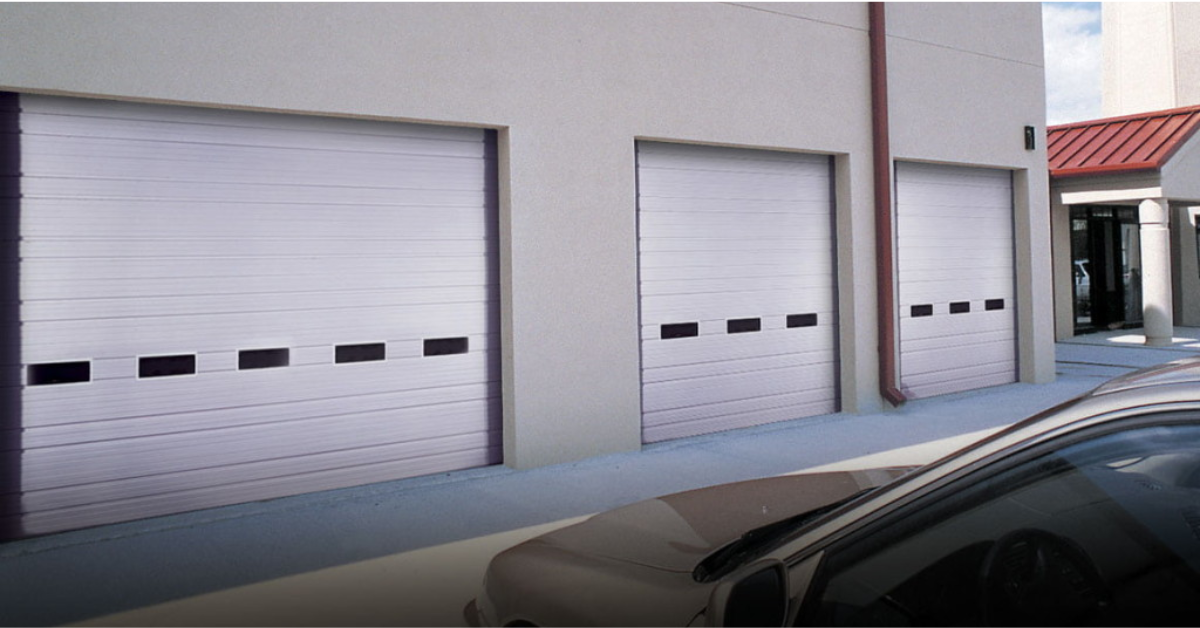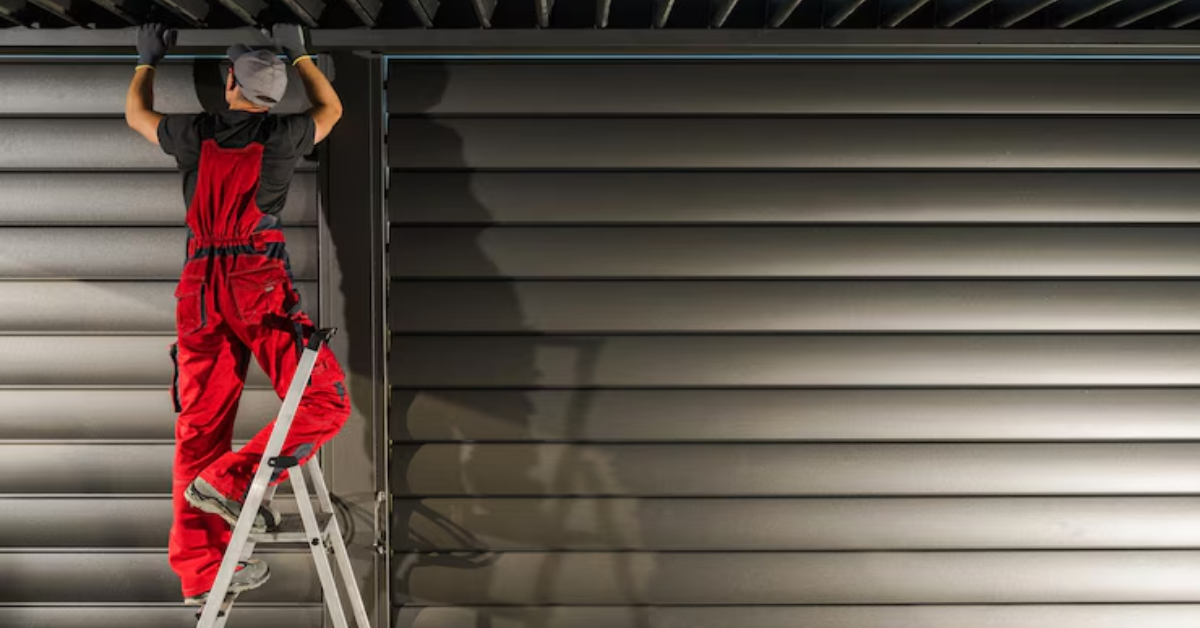Essential Safety Measures for Commercial Garage Door Operations
The efficient operation of commercial garage doors is integral to numerous industries, facilitating smooth logistics and secure storage. However, amidst their functionality lies inherent risks, necessitating meticulous attention to safety measures. Understanding the significance of safety protocols in commercial garage door operations and recognizing the potential risks associated is paramount in fostering a secure working environment.
Safety isn't merely a choice; it's an imperative aspect of operating commercial garage doors. These safety measures aren't just about compliance with regulations but also about safeguarding lives, protecting valuable assets, and ensuring uninterrupted business operations. Neglecting safety protocols can lead to severe consequences, ranging from property damage to personal injuries or even fatalities. The operational nature of commercial garage doors inherently presents various risks. From the potential for malfunctioning mechanisms to the danger posed by heavy doors in motion, the risks are diverse and demand astute management. Pinch points, electrical hazards, and improper use or maintenance can escalate these risks significantly, underscoring the need for stringent safety measures to mitigate them.
In this context, this exploration into essential safety measures aims to elucidate the critical protocols, guidelines, and best practices necessary to ensure the secure and efficient operation of commercial garage doors. This comprehensive approach seeks to equip businesses and individuals involved in these operations with the knowledge and tools needed to prioritize safety without compromising productivity.
Commercial Garage Door Systems: An Overview
Understanding the intricacies of commercial garage door systems is pivotal in ensuring their proper operation and maintenance. These systems comprise various components and come in different types, each designed to suit specific functionalities and operational requirements. Commercial garage doors consist of several essential components that work in unison to facilitate smooth and secure operation:
Panels or Sections: These form the main body of the door and can be made from different materials like steel, aluminum, or wood.
Tracks and Rollers: These guide the
door panels along the intended path during opening and closing motions.
Springs:
Torsion or extension springs counterbalance the weight of the door, enabling controlled movement and reducing strain on the opener.
Opener Mechanism: This includes the motor, drive mechanism, and controls that automate the opening and closing of the door.
Safety Features:
Sensors, photo eyes, and emergency release mechanisms ensure the safety of individuals and property by detecting obstructions and enabling manual operation during power outages.
Types of Commercial Garage Doors
Commercial settings often require specific door types to cater to diverse operational needs and spatial constraints:
Roll-Up Doors:
Ideal for spaces with limited ceiling clearance, these doors coil into a drum above the opening and are commonly used in warehouses and storage units.
Sectional Doors: Comprising horizontal panels that slide up and overhead, these doors are versatile and suited for various commercial applications, including fire stations, loading docks, and retail establishments.
High-Speed Doors:
Engineered for rapid operation, these doors enhance productivity by minimizing wait times at entrances, commonly used in busy warehouses and logistics hubs.
Fire-Rated Doors: Specifically designed to withstand fire and prevent its spread, these doors are crucial in buildings where fire safety is paramount, such as industrial facilities or buildings with sensitive equipment.
To select the most appropriate door system for specific business needs and ensure optimal performance, it is imperative to understand these components and types of commercial garage doors.
Essential Safety Guidelines
Safety guidelines are paramount in ensuring the secure and efficient operation of commercial garage doors. Implementing pre-operation safety checks and adhering to safe operating practices are crucial steps to mitigate risks and prevent accidents.
Visual Inspection of Door and Mechanisms
Before initiating operations, conduct a thorough visual inspection:
- Check for signs of wear, damage, or misalignment in door panels, tracks, and rollers.
- Ensure springs are intact and not showing signs of excessive wear or corrosion.
- Verify the condition of cables, hinges, and any moving parts for potential hazards.
Testing Sensors and Safety Features
- Test photo eyes and sensors by obstructing the door's path to ensure they halt operation.
- Verify the emergency release mechanism's effectiveness for manual operation.
Operating Controls and Remote Use
- Use remote controls and operating buttons from a safe distance to avoid being in the door's path.
- Store remote controls securely and restrict access to authorized personnel.
Keeping Clear of Moving Parts
- Warn personnel to stand clear of the door's path during operation.
- Educate on the dangers of reaching or attempting to bypass safety mechanisms while the door is in motion.
Handling Emergency Situations
- Train employees on emergency procedures in case of power failures or malfunctioning doors.
- Clearly mark and ensure accessibility to manual release mechanisms and emergency exits.
These essential safety guidelines serve as proactive measures to minimize the risk of accidents and ensure the safe operation of commercial garage doors. Regularly reinforcing these practices through training and routine inspections contributes significantly to a culture of safety within the workplace.
Maintenance and Regular Inspections
Scheduled maintenance is a cornerstone of responsible management when it comes to commercial garage doors. Its importance cannot be overstated, as it serves as a proactive approach to ensuring the door systems function optimally and safely over time. By adhering to a regular maintenance schedule, businesses can significantly extend the lifespan of their garage doors. This not only minimizes the frequency of costly replacements but also reduces the likelihood of unexpected breakdowns that could disrupt operations.
Moreover, scheduled maintenance isn't just about preserving the functionality of the doors; it's also deeply intertwined with safety. Routine inspections allow for the identification and rectification of potential safety hazards before they escalate. These inspections enable technicians to spot issues that might compromise the security of the door system, preventing accidents and ensuring a secure working environment for employees.
When it comes to maintaining commercial garage doors, following a comprehensive maintenance checklist is fundamental. This checklist serves as a guide for technicians or maintenance personnel, outlining crucial tasks that need attention during routine inspections. From
lubricating moving parts to tightening hardware and inspecting electrical components, each task on the checklist plays a pivotal role in the overall health of the garage door system.
Regular lubrication of moving components minimizes wear and tear, preserving their functionality. Tightening loose hardware and making necessary adjustments ensures proper alignment and tension, contributing to
smooth door operation. Inspecting electrical components, such as wiring and switches, prevents potential electrical malfunctions that could compromise safety. Furthermore, clearing debris from tracks and testing safety features are integral parts of the checklist, ensuring the door functions optimally and that safety mechanisms remain reliable.
The importance of scheduled maintenance for commercial garage doors cannot be overlooked. It's a proactive measure that not only extends the lifespan of the doors but also ensures their safe and efficient operation. Following a comprehensive maintenance checklist during these regular inspections is crucial for identifying and addressing issues early on, contributing to the overall reliability and safety of the door system.
Employee Training and Safety Protocols
Employee training and the establishment of robust safety protocols are essential components in fostering a secure environment for commercial garage door operations. They not only ensure the proficient handling of these systems but also prioritize the safety of personnel working in proximity to these mechanisms.
- Proper training is indispensable for individuals tasked with operating or maintaining commercial garage doors. Comprehensive training programs should cover various aspects:
- Employees need to understand the intricate workings of garage door systems, including the components, their functions, and troubleshooting common issues.
- Emphasizing safety protocols is paramount. Training should include instructions on pre-operation checks, safe operation practices, emergency procedures, and the correct use of safety features.
- Operators must be well-versed in handling the controls, remote systems, and any specialized equipment associated with the garage doors they operate.
- Regular updates and refresher courses should be provided to keep employees abreast of new technologies, safety standards, and best practices.
Beyond training, instilling a safety-oriented culture within the workplace is crucial for maintaining vigilance and adherence to safety protocols:
- Management should lead by example, prioritizing and advocating for safety measures at all times.
- Encourage employees to report safety concerns or incidents promptly. A culture that values open communication fosters a proactive approach to safety.
- Conduct regular safety meetings to reinforce protocols, discuss best practices, and address any emerging safety concerns.
- Recognize and reward employees who demonstrate exceptional commitment to safety, encouraging others to follow suit.
- Regularly review and update safety protocols in response to changing circumstances, technological advancements, or incident analysis.
By ensuring employees receive comprehensive training and by cultivating a workplace culture that places a premium on safety, businesses can significantly reduce the risk of accidents, promote a more secure working environment, and maintain the efficient operation of commercial garage doors.
Compliance with Industry Standards and Regulations
Adherence to industry standards and regulations is non-negotiable in commercial garage door operations. The Occupational Safety and Health Administration (OSHA) guidelines serve as a cornerstone for ensuring workplace safety. These guidelines encompass various aspects relevant to garage door operations, outlining safety measures, training requirements, and protocols aimed at minimizing hazards and preventing accidents.
In addition to OSHA, compliance with local codes and regulations specific to garage door operations is imperative. These local regulations may cover aspects such as installation standards, safety features, periodic inspections, and maintenance requirements. They often serve as supplementary measures to ensure the safety and proper functioning of garage door systems within a particular jurisdiction.
Businesses engaged in commercial garage door operations must prioritize understanding and implementing these industry standards and regulations. Complying with OSHA guidelines and local codes not only mitigates potential legal repercussions but, more importantly, ensures the safety of employees, customers, and the public. It establishes a framework for maintaining a secure work environment while upholding the highest safety standards in the operation and maintenance of garage door systems.
Conclusion
Embracing a safety-first approach in commercial garage door operations is paramount for both operational efficiency and personnel well-being. Recapitulating key safety measures, including regular maintenance, employee training, adherence to industry standards like OSHA guidelines, and local regulations, forms the foundation of a secure and reliable workplace. By prioritizing safety at every level, from routine checks to fostering a culture that values and prioritizes safety, businesses can not only prevent accidents but also ensure the seamless functioning of their garage door systems while safeguarding the welfare of all involved.




